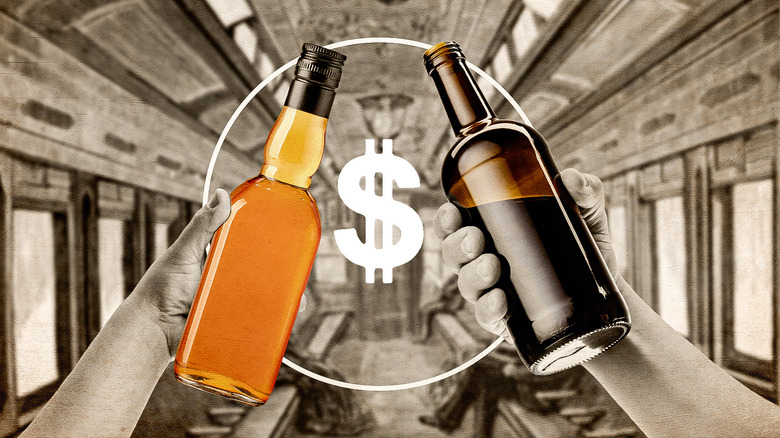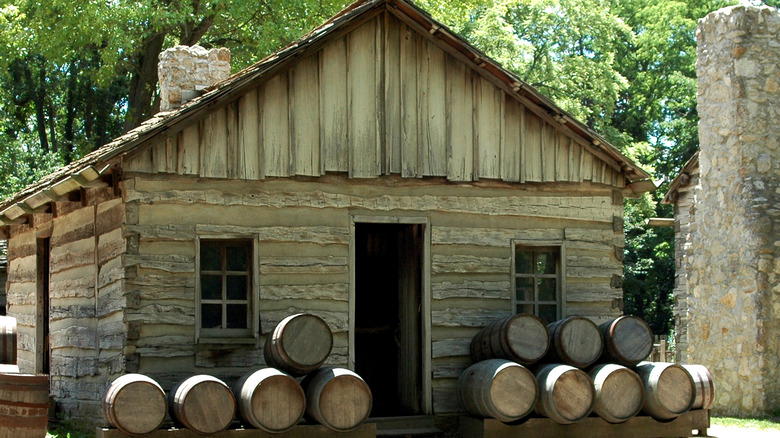How Whiskey Was Used As Currency In 18th Century America
The 18th century was a monumental turning point in American history, not least because of the Revolutionary War which overthrew the British government's rule over the colonies. The circumstances that led to the Revolutionary War are complex and up for debate but a crucial piece of the puzzle was currency. Since the colonies imported more goods from Britain than they exported, the flow of money went from the colonies to Britain. This made the economy in the colonies precarious. Once the Revolutionary War began and the British pound was on its way out, the American economy became even more unstable with little consistency in what money was worth even from town to town. This meant Americans had to get creative about how to facilitate trade. One popular method was to use whiskey as a form of currency.
Whiskey was prevalent in the colonies because the frontiersmen who were miles away from the cities on the East Coast had a difficult time selling all of their crops. By turning their grains into whiskey, their farm product became easier to transport and therefore easier to sell. The fact that whiskey didn't need to be imported made it even more useful as a form of money. Alongside the substantial supply of whiskey was an equally substantial demand. People enjoyed drinking it, of course, but whiskey was also used for medicine and cooking. All of this combined to create a grassroots monetary system that functioned better than paper money for several decades.
Where the whiskey runs
Whiskey wasn't the first consumable product to be used as currency in America. In the 17th century, tobacco had been a common choice. More specifically, you could buy a share of tobacco which would be available at a later date and you would get a receipt for that amount. People would trade their tobacco receipts as being worth the amount of money that they paid for the tobacco. So if you bought 10 dollars worth of tobacco, you could trade the receipt as if it were a 10-dollar bill.
One major issue with the tobacco receipts was that you couldn't split it in any way. A 10-dollar receipt could only be traded for something worth 10 dollars. Although the details of whiskey's use as a currency aren't fully fleshed out, one can imagine that whiskey didn't have this issue since you can pour half a bottle of whiskey if you need to.
The use of whiskey as a currency became a central force in American politics in the 1790s when the new American government imposed a whiskey tax to help pay off their war debts. Since whiskey was primarily a product of the frontier, where it was also used as a form of currency, this tax was perceived by many as an overreach by the coastal elite. The Whiskey Rebellion forced George Washington to march west with his militia. The rebellion ended relatively bloodlessly but whiskey remained an important part of trade for years to come.

